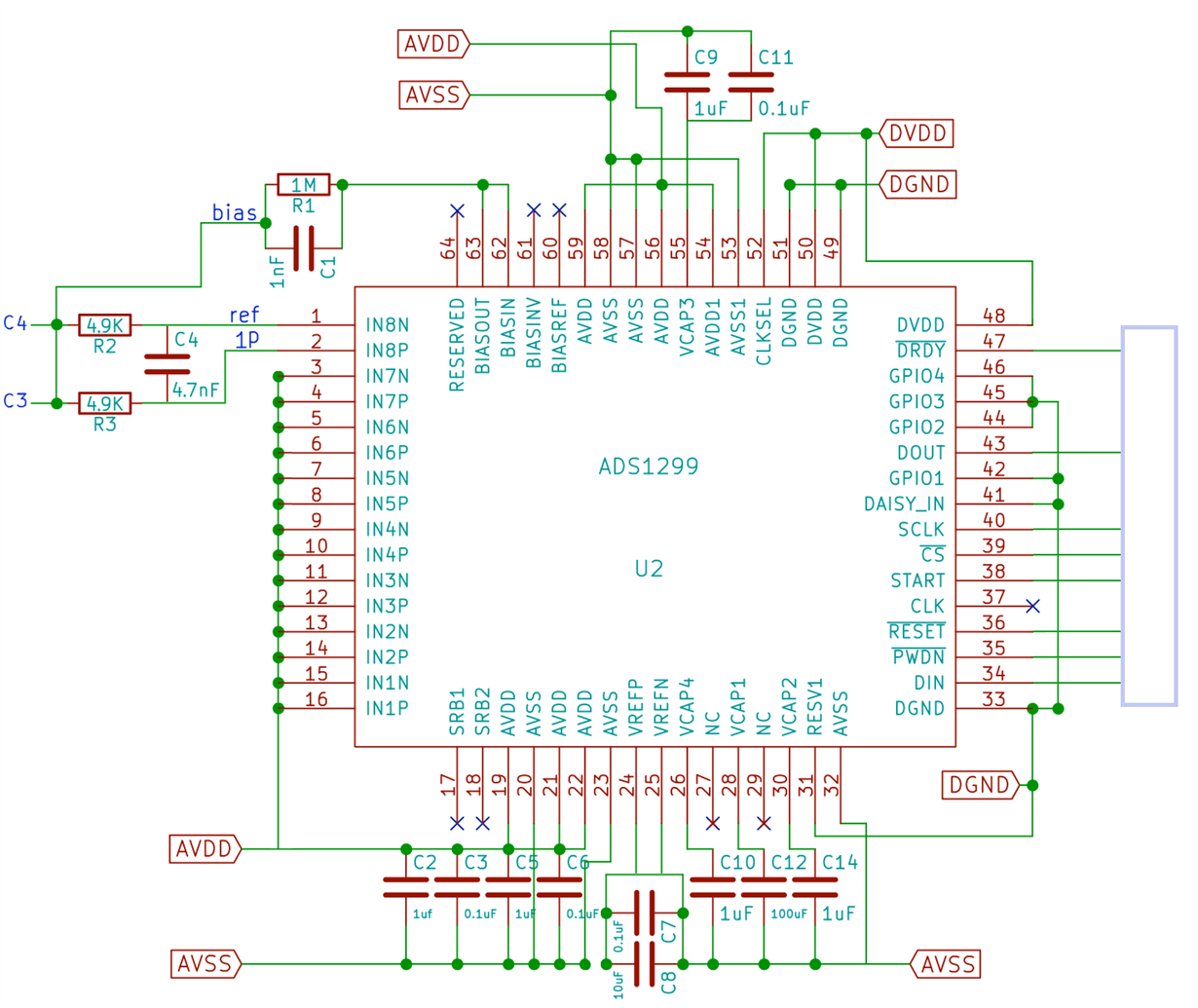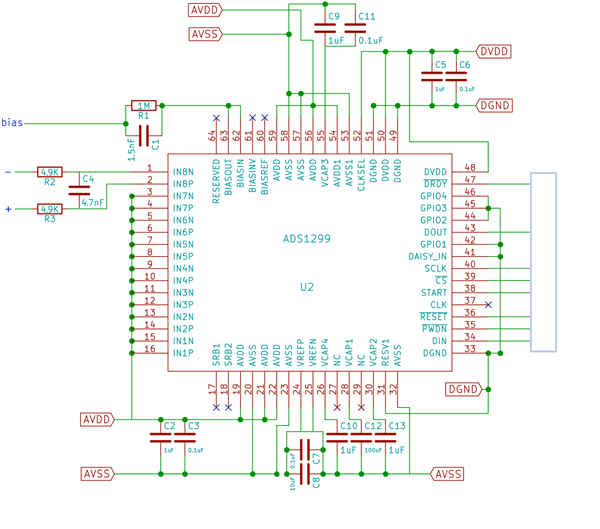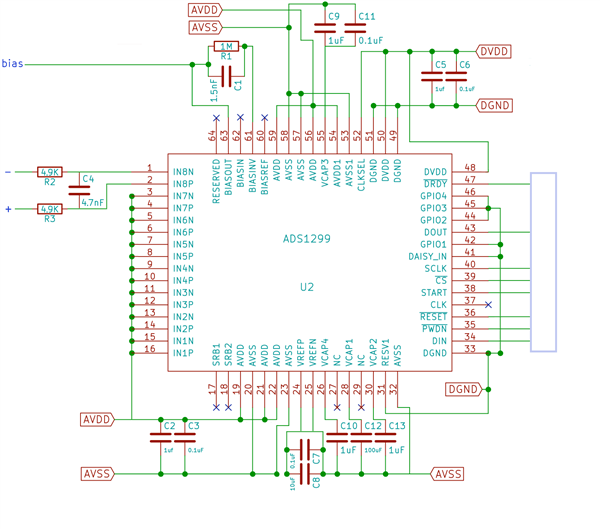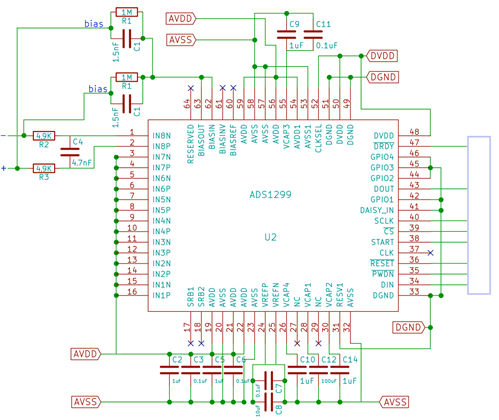Hello,
I am trying to acquire one channel of EEG but using only 2 electrodes.
I have put together a rough schematic of how I intend to achieve this by connecting the Bias output to the + and - of the differential input channel.
1) is this possible or am I missing something?If I only include 8P and 8N in the bias, then in addition to offset, mains, etc., will there also be EEG signals which are common between 8P and 8N? Especially if for example, I am placing 8P@C3 and 8N@C4 on the 10-20 system.
2) the ADS1299 datasheet says to short unused channels to AVDD. I assume I should not include the unused channels in the bias?
3) The RC filter (Fc = 6.7kHz) between 8P and 8N is taken from Fig. 72 in the ADS1299 datasheet, using a differential capacitor instead of a shunt cap to ground to improve common-mode rejection as advised. However, in the ADS1299EEG-FE PDK, the capacitors are shunted to ground? Why is that? Should I still use the filter below if I am connecting bias directly to both 8P and 8N?
4) Finally, on a different topic, regarding decoupling capacitors, is it enough to just have them between AVDD - AVSS, or should I also have caps between AVDD-DGND, DVDD-AVSS and DVDD-DGND?
Thanks for your help!






